Is the three wheeled i-Road the future?
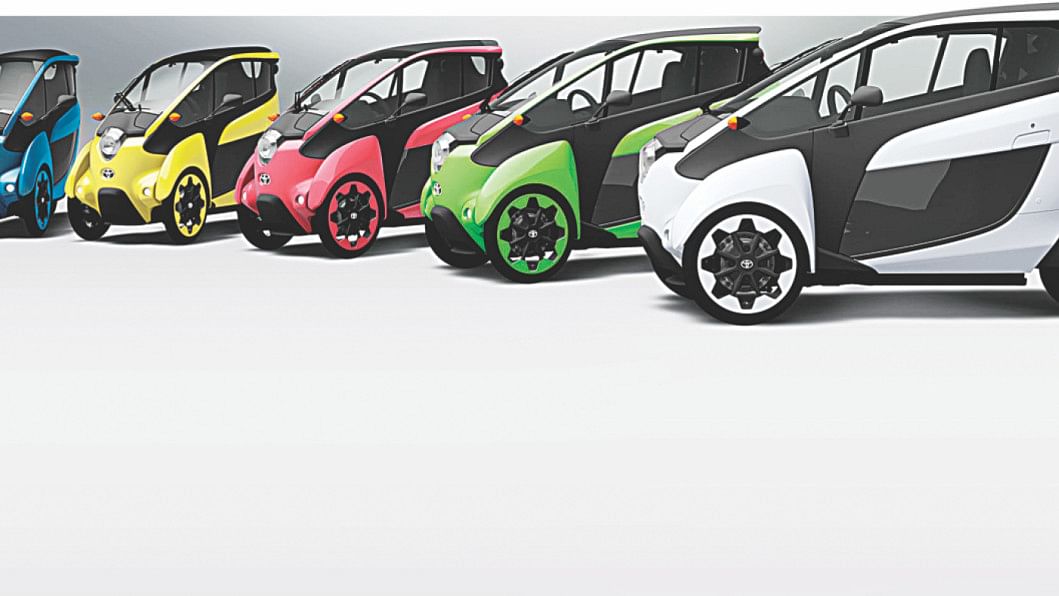
The i-Road looks cutesy and futuristic. But it is no toy. It could possibly be the car of the future. Here's why.
A while ago I was in Japan for a demonstration of Toyota's line-up of future cars. One of those included a closed track drive of the i-Road we see here. This is not a production vehicle but for many countries, it very well should be, simply because of its packaging.
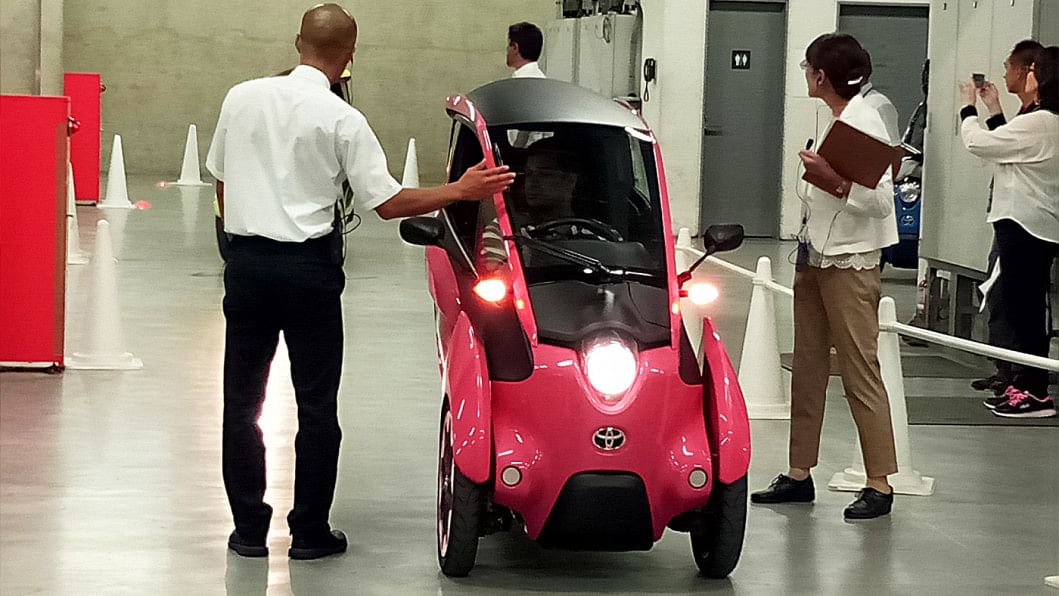
The enclosed three wheeled vehicle can accommodate a large, jelly bellied human quite easily. The layout is spartan, to say the least. There are no massaging seats obviously – in fact, there's only one seat, with a tiny padded cell at the back that is best suited to luggage than life sized humans. It has buttons for selecting forward and reverse motion and a couple more for the headlights and window demister.
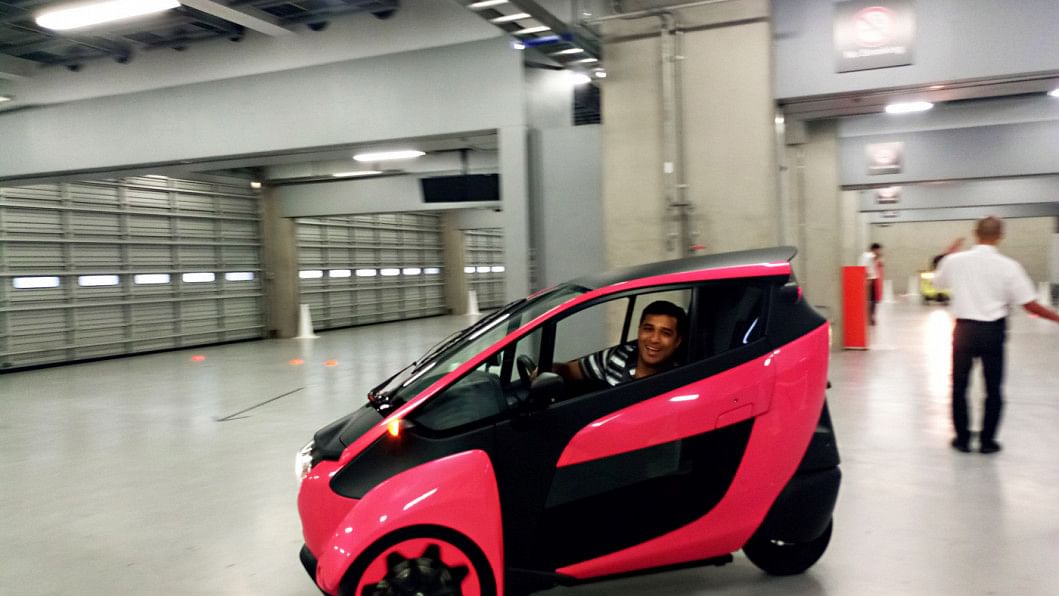
I picked the bright pink one because, why not. It's quick. You step on it and you scoot to 20 km/h immediately. The braking, whether you tap the pedal or just let go of the accelerator, is surprisingly reassuring. But the real fun is how it steers. A clever Active Lean System helps the vehicle lean into corners much like in a motorbike, which is intuitive to how a person naturally runs around a corner. The rear wheel steering is a little odd at first but within minutes it can become second nature. The torque delivery is addictive - all there, right away. Which explains why on my first run I almost overshot a turn. The heart-in-mouth moment quickly resolved as I realised it is just like being on a bike. The rear wheel does all the direction changing electronically while the lean is to prevent the thing from toppling over. Once you get the hang of it, you can't help doing it again.
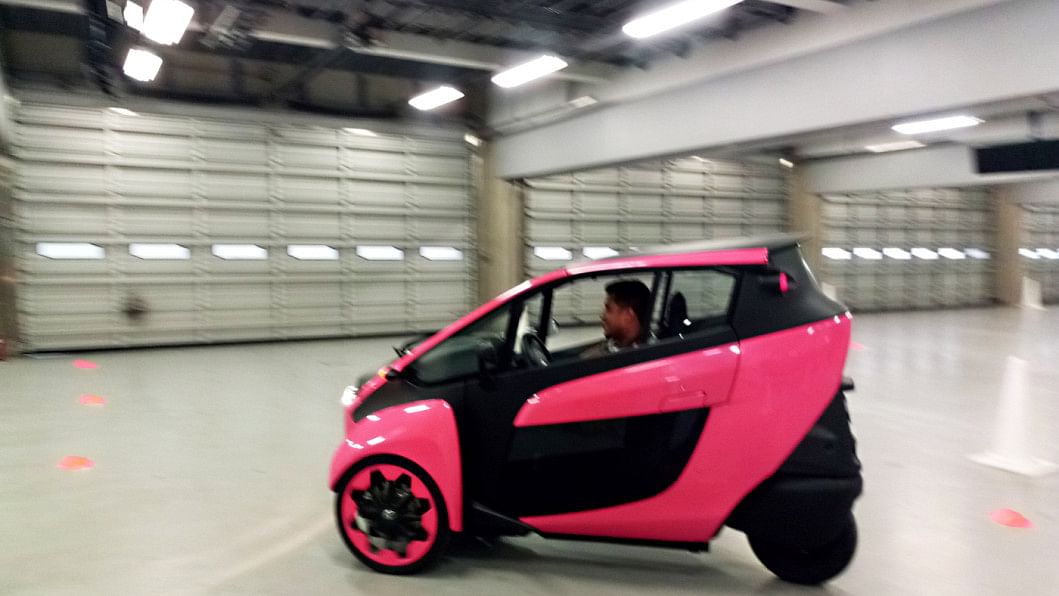
It is ridiculously fun to drive and the "car" can hit 60km/h with a 30-40km rechargeable range from a household power socket. Now, why wouldn't we want this in a city where there are hardly any roads worth calling roads? Because sadly, we love the status afforded by ridiculously big cars that remain stationary in traffic.
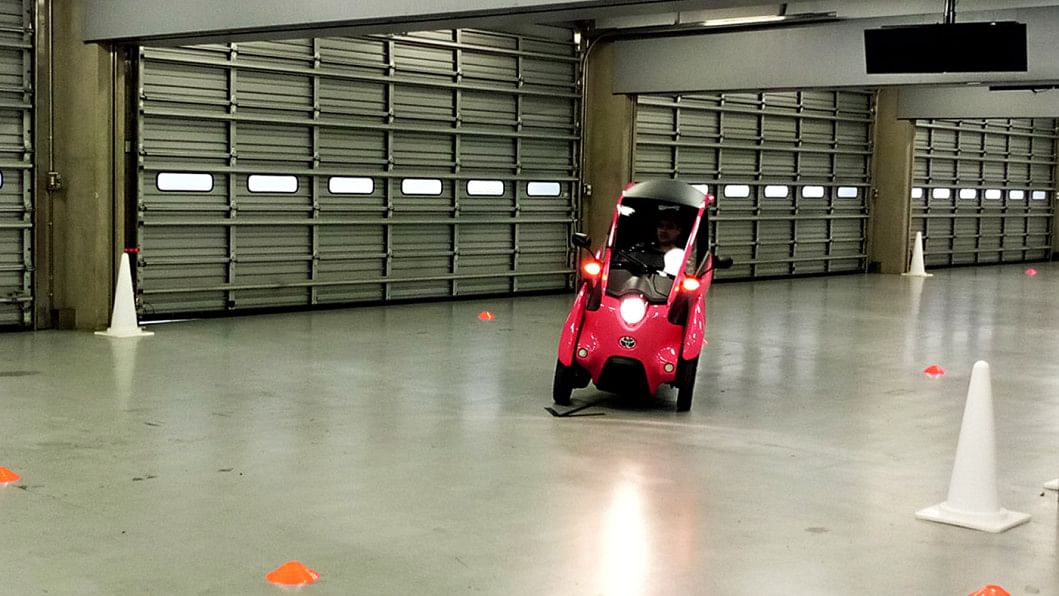
Bangladesh badly needs the i-Road, for any semblance of urban mobility
When we were given the chance of driving the i-Road, a precious pre-production demo vehicle brought in for the 2018 Dhaka Motor Show alongside the FT1 and Mirai by Navana Ltd, it seemed too good to be true. Granted it was for a couple of minutes on a makeshift course around Navana's showroom, but driving a car from the future was quite a treat.
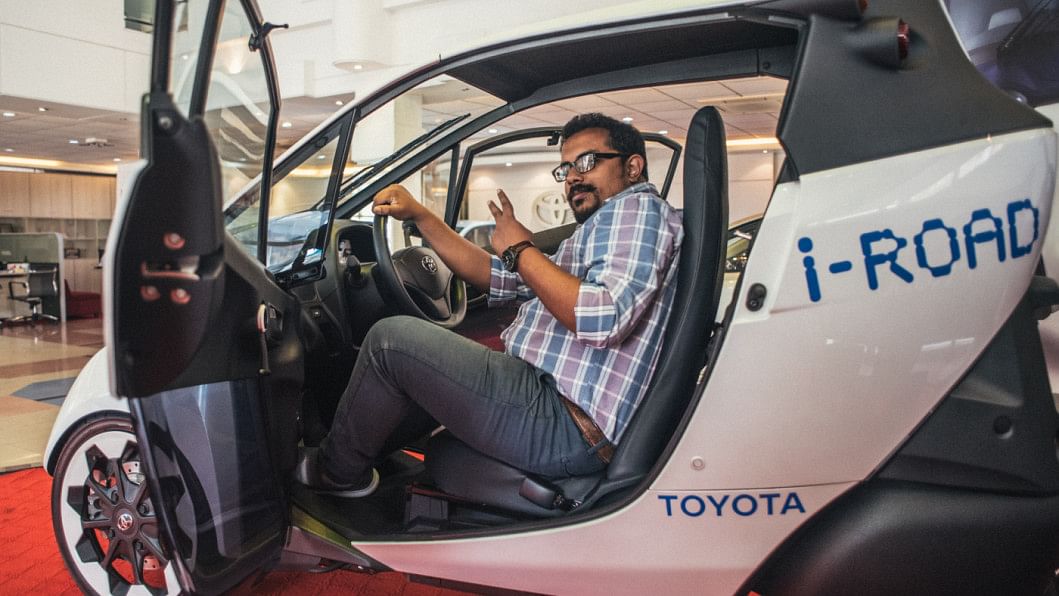
The Japanese are space conscious – you can see it in the way they build their houses, package their food and the cars they design. While kei cars nearly solved the problem of parking in tight urban spaces, they're still far off in terms of actually aiding mobility. It's not a problem of length – it's a problem of width. It's the reason why crowded nations like Hong Kong, Vietnam and Bangladesh are so reliant on the motorbike – it allows people to travel within cities without sitting in traffic for hours on end.
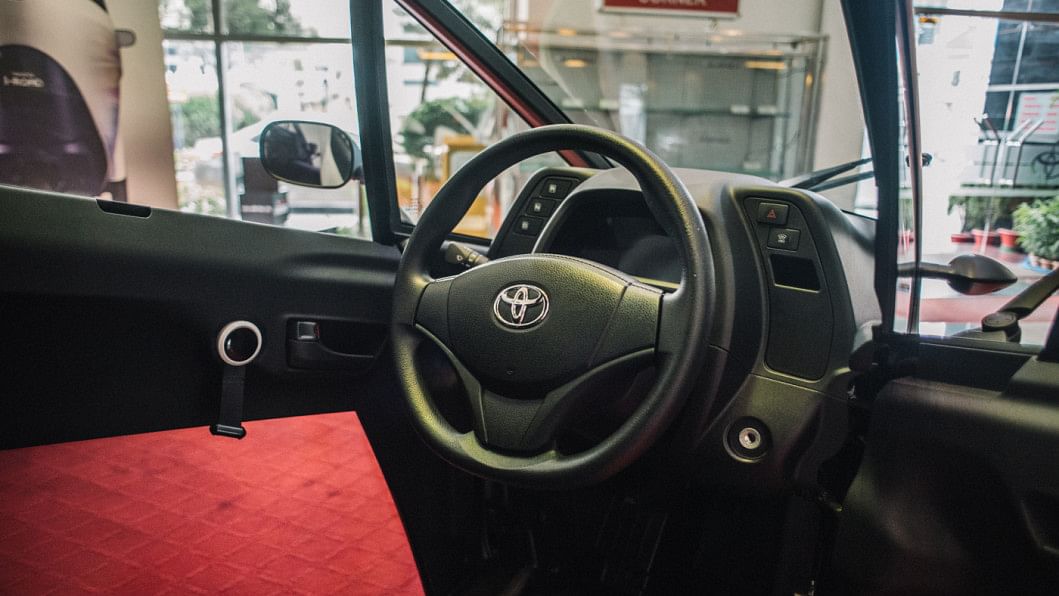
While the i-Road sits in that grey area between a car and a motorbike, it solves the issues with both – it has all the benefits afforded by the reduced width of a motorbike, while protecting the occupants from dust and dirt and death with nearly the same sense of assurance provided by cars. While running silently on planet-saving lithium-ion power.
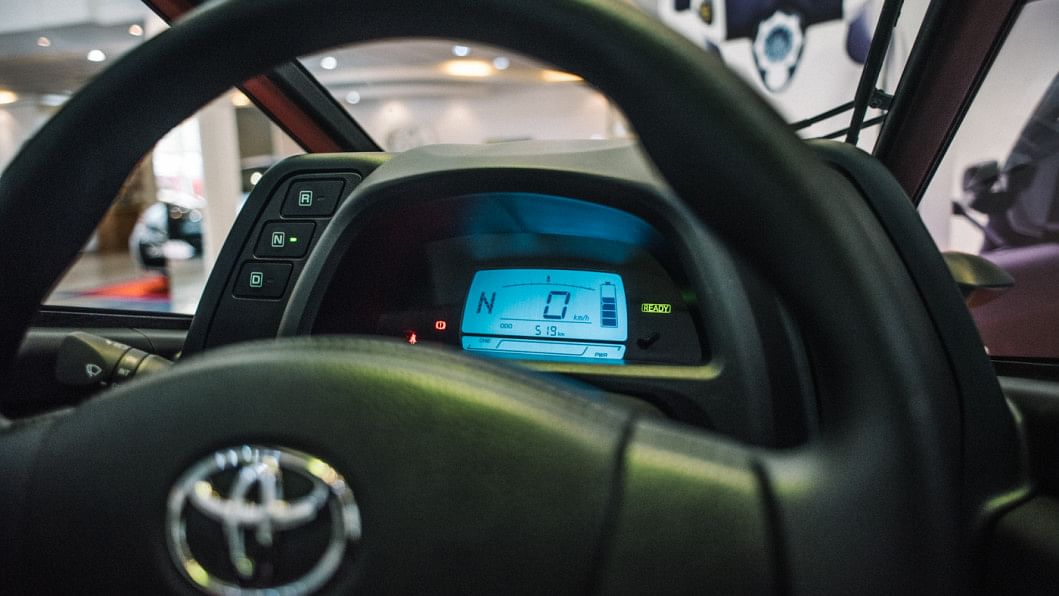
Bangladesh needs the i-Road. But first, Toyota needs to make it. It's all well and good touting they've solved the problems for the future, but the future needs to happen now.






Comments